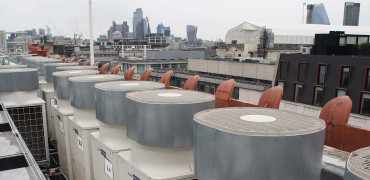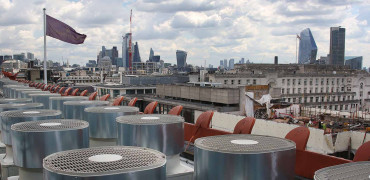I celebrated ten years at Mitsubishi Electric this year and this coincides with the 10th Anniversary of our unique water-based VRF system called Hybrid VRF (HVRF), which has become even more relevant today than when it was first launched.
The focus in buildings now is on reducing the global warming potential (GWP) of an air conditioning system, and HVRF achieves this by significantly reducing the amount of refrigerant needed within a building.
The last ten years has been quite a journey for me and has been closely associated with HVRF as I’ve even spent time working in the Japanese factory were HVRF systems were created,
This involved a two-and-a-half-year secondment to Mitsubishi Electric’s Wakayama factory, which is in the Kansai region of central Japan, located on the Kii Peninsula.
Known for its UNESCO World Heritage Sites, its fishing and its rich agriculture, Wakayama and the surrounding area couldn’t be more different to what people mostly think about Japan, the vibrant hustle and bustle of the capital, Tokyo.
HVRF helps reduce refrigerant in occupied spaces and uses much lower GWP refrigerant
Two ‘newbies’
I had a fantastic time in Japan and have made some lifelong friends, as well as played my part in refining HVRF and making it even more suitable for the UK market.
When I joined Mitsubishi Electric as a Graduate Trainee in 2015, we had just launched HVRF, which combines the design and operational flexibility of VRF air conditioning with the comfort normally associated with a chilled water system.
This, like me at the time, was pretty new to the industry and some of my first jobs were getting involved in making sure that HVRF was designed and installed in exactly the right way to maximise comfort and minimise energy consumption.
HVRF does use refrigerant, but most of its heat transfer circuit uses water as the medium to transfer energy.
It’s worth taking a moment to explain what makes HVRF so brilliant and to do so, I’m going to go back to basics, so forgive me if this seems pretty obvious for anyone in the Aircon industry.
Back to basics
In simple terms, VRF (Variable Refrigerant Flow) air conditioning uses copper piping to connect an outdoor compressor to indoor units (on the wall, floor, in the ceiling, or hidden behind vents). These pipes contain a refrigerant, which transfers heat and cooling energy from one place to another to provide heating or cooling where required.
This makes VRF very flexible to design, install and operate, because it can be installed in sections and controlled both locally and remotely, which is why VRF became the dominant form of air conditioning in the UK over Chiller technology.
Under F-Gas Regulations, certain types of refrigerants are being phased out because they have a high GWP, so the type of refrigerant in a system is important, but also the amount or volume of refrigerant as well, and this is where HVRF wins hands-down.
Already R32
Hybrid VRF is so-called because it uses refrigerant between an outdoor compressor and a mid-point – called a Hybrid Branch Controller or HBC Box, just like a VRF system, but from then on, the piping can be changed to MLCP barriers plastic pipes and water is used to transport heating and cooling around the building.
This not only improves comfort levels but significantly reduces the amount of R32 refrigerant in the building, which is great for GWP and the carbon footprint as well as removing the need for expensive leak detect equipment.
And HVRF already utilises lower GWP R32 refrigerant, which helps reduce the environmental impact of systems and helps building owners and tenants reach their Corporate Social Responsibility targets by contributing to a cleaner environment.
R32 has 65% lower GWP and up to 80% CO2 reduction compared to R410A.
So, not only does HVRF offer a way of reducing refrigerant in occupied spaces to lower the GWP of the system, but it is also ahead of the majority of VRF systems in the type of refrigerant it uses.
And because it uses MLCP barriers plastic piping throughout most of the internal system, there is no need for brazing or fire permits. This makes HVRF more future-proof than VRF against the F-Gas Phase down when newer ultra-low GWP refrigerants come to market, because it can be upgraded by changing the outdoor compressor unit and the HBC element.
And that is all thanks to the brilliant engineers and technicians back in our factory and R&D Centres.
So, happy anniversary Hybrid VRF, and here’s to the next ten years, with even more innovation to come!
Jobin Varghese is Product Manager for Hybrid VRF Systems.




